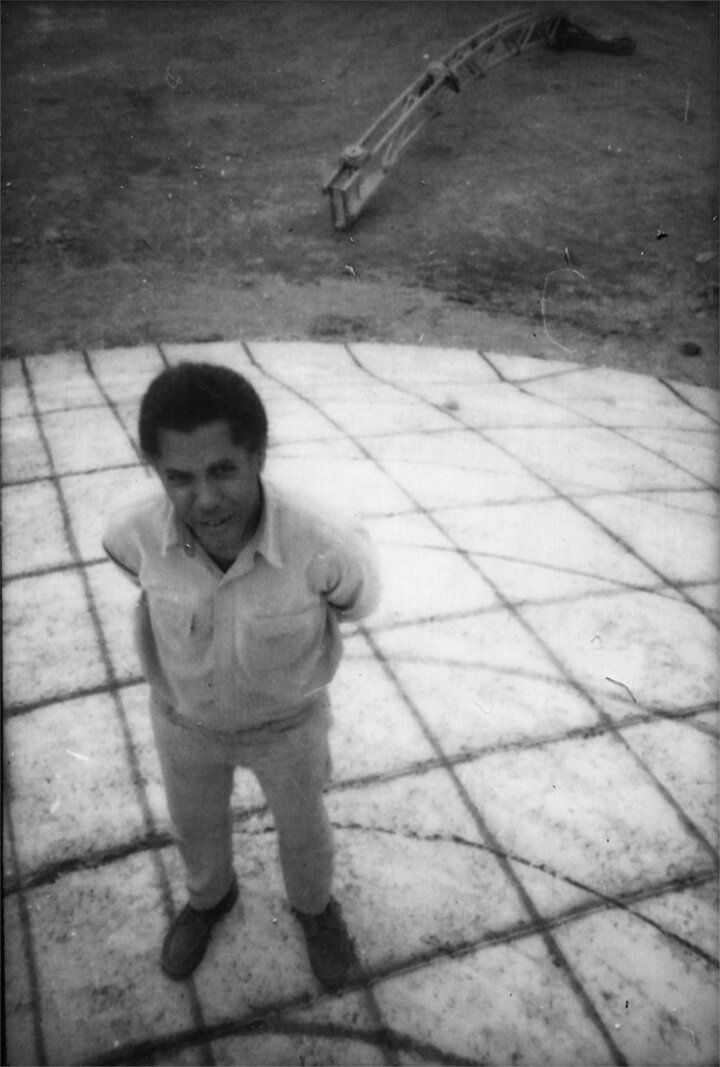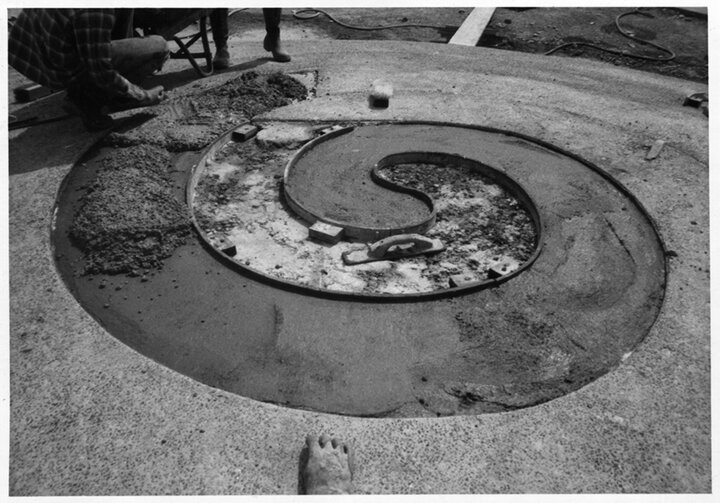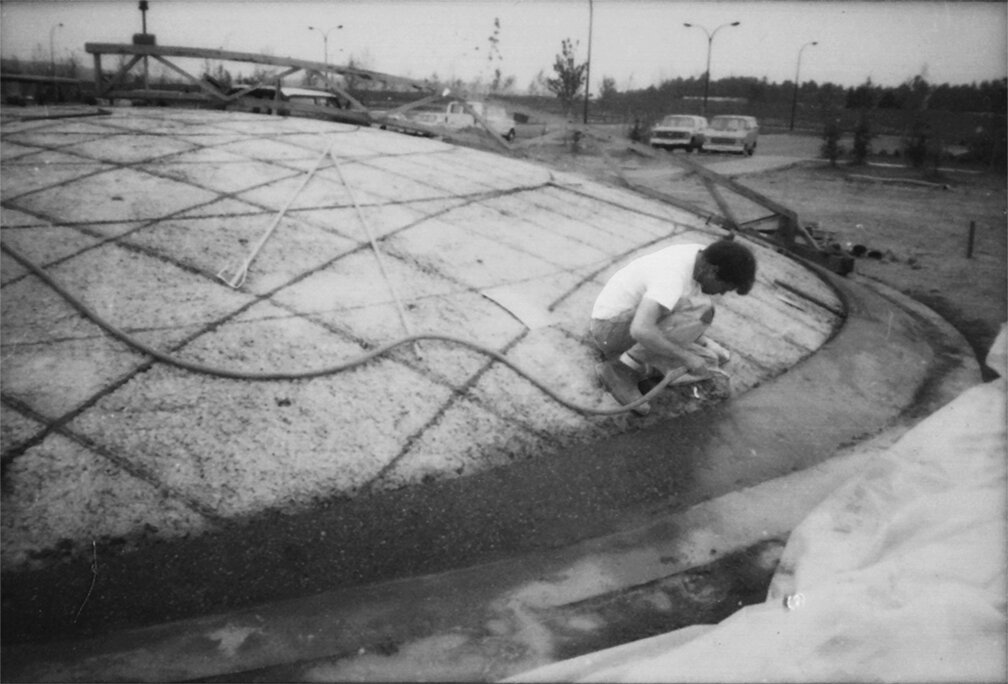Knoll for NOAA - Martin Puryear, 1983
Martin Puryear standing on spherical subslab of his earthwork sculpture, ‘Knoll for NOAA’; Sand Point, Seattle WA 8/83
It was 40 years ago, I had just returned to Seattle from a couple of years of living and working in Italy and in need of work. Chuck Greening, for whom I’d been a helper and somewhat of a collaborator on his Meridian Archway commission in the late 70’s invited me to join him in assisting sculptor Martin Puryear build out his large earthwork during the summer of 1983. Entitled ‘Knoll for NOAA’, the piece is made from reinforced concrete, a material that it seems Puryear rarely worked with.
A large Federal project, the new Western Regional Center for the National Oceanic and Atmospheric Administration (NOAA) was being completed on the shore of Lake Washington in North Seattle. As part of the landscape program for the large grassy expanse that surrounded the building, 5 earthworks had been commissioned. Pieces by Siah Armajani, Doug Hollis, George Trakas, Scott Burton, and Martin Puryear would transform the area into a major example of the landscape inspired sculpture that had blossomed simultaneously with the earth consciousness of the 70’s.
‘Knoll for NOAA’ by Martin Puryear, nearing completion of the interlocking spirals; photo: R Williamson, 8/83
I stumbled across a black and white contact sheet of some photos that I’d taken during the construction process. Unfortunately the negatives were lost by the county arts commission before I could have prints made of the best shots. For this reason, some of these are extremely grainy since they are scans of the thumbnails. But to my knowledge they are the only series that shows the various steps in the concrete and glass construction process.
Martin Puryear with rolling screed before the top coat of concrete, aggregate and cut glass cane are applied; summer of 1983
I found Martins technique to be ingenious. He had built an arcing truss with a metal screed mounted to the lower edge and with a stout pin to anchor it at the top and a rolling unit that bolted to the lower end. This made it easy to keep the top layer of concrete perfectly spherical as we rolled it around after each course had the wet topping applied.
In several of the photos, including the two above, you can see the thick ribbon-like strip that was our moving edge form. Heavy but easily bendable, it was made of solid lead. It only needed to be secured with the occasional block and rebar pin as we formed the spiraling bands of concrete that narrowed at the top.
Martin Puryear and Chuck Greening at work on Puryears ‘Knoll for NOAA”, in Seattle, summer of 1983. photo R Williamson
Rounded squares of cut glass cane were made by Seattles Glass Eye Studio and placed by Martin at the intersections of the grid that he had spray painted on the subslab, seen in some of the photos.
Chuck Greening exposing the aggregate in the first course of the spiral sphere; 8/83
The final effect once completed, and now surrounded by lush green, is of an enormous sphere emerging from the landscape. Perhaps the alluding to the atmosphere in the organizations name.
Years later, looking at some of the incredible artworks that Marin Puryear has made, the one below (whose title I have yet to uncover), strikes me as springing at least in part from his experience working on the ‘Knoll for NOAA’ with the rolling outer wheels anchored by a still center point.
Martins work is in major public collections throughout the country and world and he has received many accolades and prestigious awards for his outstanding life-long creativity with a level of craftsmanship that reveals his devotion to his tools and his insights into materials.
Large Wheel sculpture (MOMA?); Martin Puryear; I’m looking for the details of this piece - name and date - but haven’t found it yet!






